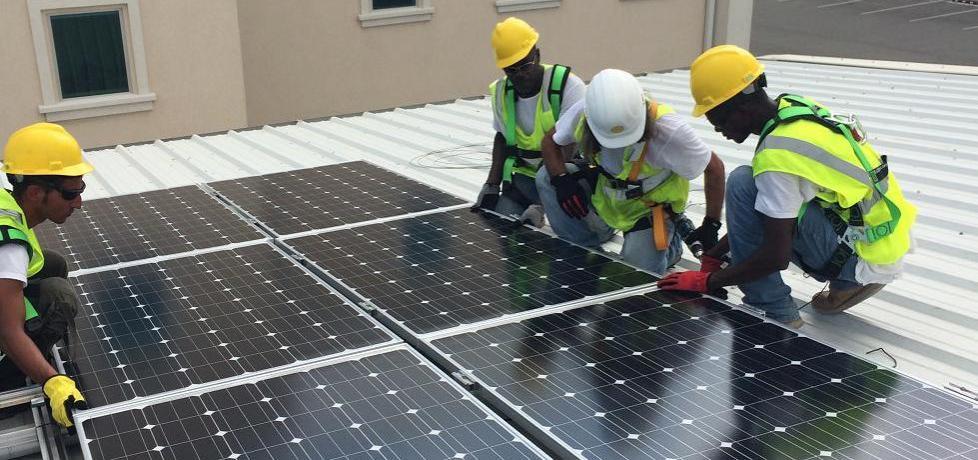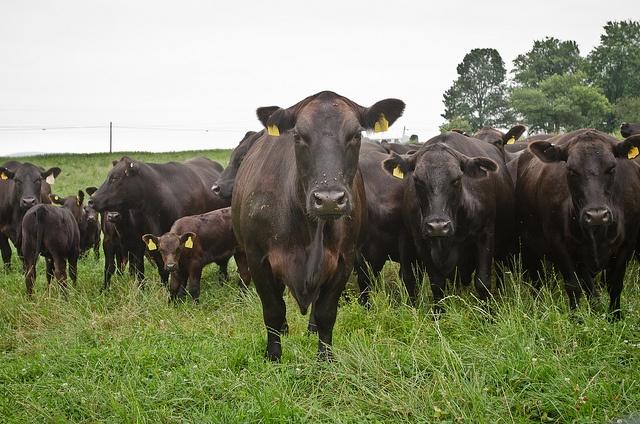Dr. Pepper Snapple Group is Serious About Reducing Waste


Dr. Pepper Snapple Group has surpassed several of its environmental targets, as its latest corporate social responsibility (CSR) report reveals. The company that has over 50 beverage brands is really serious about reducing waste. DPS set a goal of recycling 60 million pounds of polyethylene terephthalate (PET) plastic by 2015, but last year recycled 60.7 million pounds.
The company also achieved its goal of an 80 percent recycling rate by 2015 -- four years early in 2011. DPS set a new goal of a 90 percent recycling rate of its solid manufacturing waste. It is well on its way to meeting the new goal: In 2013, it recycled over 85 percent of its manufacturing solid waste, a 3 percent increase from 2012. Some of its sites achieved double-digit increases in their recycling rates in 2013. One of those sites is its Miami plant which achieved a recycle rate of 83 percent, up from 61 percent a year earlier.
Through partnerships, DPS is also able to promote recycling: It works with the American Beverage Association to help develop an industry approach to reducing waste. It began partnering with Keep America Beautiful in 2013 to support recycling efforts in communities across the country. Through its partnership, the company donated $300,000 to put recycling bins in public parks, which gives consumers more access to local recycling systems. DPS renewed the partnership for 2014.
Working on reducing fuel use
DPS is also working on reducing its overall fuel use, and set a new baseline for its goal of increasing product shipments per gallon of fuel use by 20 percent by 2015.
The beverage giant admits that its progress towards the goal “has been relatively flat,” which it attributes to a “slight decrease in production volume year-over-year and a shift to other lower-emission methods of transportation.” It is taking steps to meet its goal, including increasing the efficiency of its product shipments by reducing the miles driven per shipment by over 3 percent.
Another way it is reducing fuel use is by using EPA SmartWay-certified carriers in its third-party logistics. It has been an EPA SmartWay member since 2010.
Conserving water and protecting watersheds
Water is the main ingredient in the company’s products, so reducing its use will be a big achievement. The goal is to use 1.77 gallons of water per gallon of finished products and discharge 0.79 gallons of wastewater per gallon of finished product. In 2013, DPS used about 2.05 gallons of water for each gallon of finished product and discharged 0.88 gallons of wastewater per gallon of finished product.
DPS also promotes good water stewardship by partnering with certain nonprofits, including the Nature Conservancy (TNC). Through its four-year, $1 million partnership with TNC, the company has helped protect 2 million acres of watershed in the Dallas, Houston and San Antonio, Texas areas.
Energy continues with efficiency projects
DPS admits that progress towards its goal for its energy use “has remained flat” because energy efficiency improvements have been offset by production volume changes. However, its energy efficiency investments have resulted in improvements in various sites.
One of those sites is the company’s 850,000-square-foot distribution center in Victorville, California, which received LEED Silver certification. Its Plano, Texas, headquarters received LEED Gold certification for a multi-use building and is Energy Star certified by the EPA.
Image credit: Dr. Pepper Snapple Group
Solar System Will Power New Dropbox Office


Dropbox provides a handy and free service that allows you to share documents, videos and photos with people. Founded in 2007, the site has over 300 million users globally. Its new San Francisco office, which is LEED Platinum certified, will feature a solar energy system designed by UGE, a global distributed renewable energy company. The 25.2 kilowatt (kW) photovoltaic system will supply enough energy to offset the electricity used in the six-story building designed by William McDonough Partners. The PV system will feature 84 300-watt solar panels.
"On-site renewable energy will power a sustainable future for Dropbox -- a visible step forward for an innovative company located in the heart of the tech capital of the world," Scott Van Pelt, director of engineering at UGE, said in a statement. "UGE's software tools have played a crucial role in designing efficient solar and wind systems based on site-specific resources, so it's both exciting and fitting that one of our energy solutions will top the headquarters of a leader in cloud technology."
UGE has designed other renewable energy (wind and solar), lighting and battery storage systems for global companies, including Hilton, BMW, Ford, BMW and Ford:
- The Hilton Resort in Fort Lauderdale, Florida, installed six UGE wind turbines on its roof.
- UGE designed a hybrid renewable energy system for a BMW dealership in Beijing, China, consisting of five wind turbines and 100 kW of solar panels.
- A Ford dealership in Ontario, Canada, installed an UGE wind turbine to power its brand sign located in front of the site. The wind turbine is located next to the sign.
UGE also designed and supplied a renewable energy outdoor lighting system for a Whole Foods store in Brooklyn, New York, and a renewable energy system for the Philadelphia Eagles’ stadium. The Brooklyn Whole Foods, opened in December 2013, features 19 UGE Sanya SLS streetlights which are powered by both the wind and sun. The store also features two UGE Sanya Skypump electric vehicle charging stations. The store achieved LEED Platinum certification.
The Philadelphia Eagles’ stadium is the first professional stadium in the U.S. to install a renewable energy system capable of generating all of the electricity needed onsite. The system features both wind turbines and solar panels which produce about six times the amount of power needed every year for all of the team’s home games.
Image credit: UGE
3p Weekend: 5 Reasons for Companies to Care About Employee Satisfaction


With a busy week behind you and the weekend within reach, there’s no shame in taking things a bit easy on Friday afternoon. With this in mind, every Friday TriplePundit will give you a fun, easy read on a topic you care about. So, take a break from those endless email threads, and spend five minutes catching up on the latest trends in sustainability and business.
Employee engagement and satisfaction is a hot topic in the sustainability space right now, but some companies may still find themselves asking: What is a happy employee really worth? Well, quite a bit actually. To prove it, this week we rounded up five reasons for companies to start caring about employee satisfaction. (If you can't keep your eyes off the clock, feel free to 'accidentally' leave this article in the office copy machine.)
1. Healthier profits
While it's not set in stone that unhappy employees lead to business failure -- or vice-versa -- research shows that companies with satisfied staff tend to pull in higher profits.
A 2010 Gallup study determined that an unhappy staff can foreshadow a downturn in profits. Gallup revisited the subject in 2012 and found that companies in the top quartile for engaged employees, compared with the bottom quartile, had 22 percent higher profitability. In another recent study of 64 organizations conducted by IBM Kenexa, researchers found that organizations with highly engaged employees achieve twice the annual net income of organizations whose employees lag behind on engagement, Forbes reports.
2. Better stock returns
Want better stock returns? Boosting employee satisfaction may be just the ticket, according to an academic study released earlier this month.
Specifically, researchers looked at the relationship between employee satisfaction and stock returns, using lists of the “Best Companies to Work For” in 14 countries as their database, Triple Pundit contributor Raz Godelnik reports. The researchers found that “employee satisfaction is associated with positive abnormal returns in countries with high labor market flexibility, such as the U.S. and U.K., but not in countries with low labor market flexibility, such as Germany.”
In other words, greater employee satisfaction contributes to higher stock returns, at least in labor markets that are more flexible, so that's something for executives to keep in mind if they notice declining stock prices and more long-faces in the break room.
3. Increased customer loyalty
In a recent blog post on Triple Pundit, Gwen Migita, VP of sustainability and community affairs for Caesars Entertainment, drew a direct link between customer loyalty and employee engagement in sustainability programs."At Caesars Entertainment, we have found that the best way to engage our customers in our sustainability journey is by engaging our most valuable asset: our employees," Mitiga wrote. In fact, a study commissioned by the company and conducted by Harvard Business School found that customer loyalty and satisfaction – that is, customers’ willingness to return to one of the company's hotels or casinos and their overall experience – is directly linked to employees’ level of participation in sustainable activities at work.
4. Fewer mishaps
Another key takeaway from Gallup's 2012 report is that engaged and satisfied employees also tend to have fewer mishaps at work: Companies in the top quartile for engaged employees, compared with the bottom quartile, had 28 percent less theft and 48 percent fewer safety incidents, according to the findings.
5. More participation in CSR programs
This one should probably go without saying, but you'd be surprised how many companies fail to draw a link between satisfied employees and the success of corporate social responsibility (CSR) programs. It's just common sense: An engaged, satisfied employee will be far more willing to participate in volunteer initiatives, corporate giving programs and other CSR opportunities at work, while unsatisfied employees are likely counting down the minutes until they can get out the door.
So, it's no huge shock that companies that are well known for happy employees, like Microsoft, Patagonia and SAP, are also industry leaders in employee volunteering and other CSR programs. The bottom line is: If a company wants to curate a sustainable and socially-responsible brand image, it's important to start at its own HQ if executives want employees -- or the rest of us, for that matter -- to take notice.
Image credit: Glen Wright via Flickr
Based in Philadelphia, Mary Mazzoni is a senior editor at TriplePundit. She is also a freelance journalist who frequently writes about sustainability, corporate social responsibility and clean tech. Her work has appeared in the Philadelphia Daily News, the Huffington Post, Sustainable Brands, Earth911 and the Daily Meal. You can follow her on Twitter @mary_mazzoni.
NRG Energy Crowdsources Presidential Hunt


Executive recruiting appears to be changing. Energy company NRG has put out a call for a new president for its solar company NRG Home, and it isn’t expecting to hear from professional headhunters.
Instead, it’s turned up the megaphone and reached out to its customers and clients – anyone actually, who isn’t a “corporation, partnership or other business entity.”
And the person who refers the winning candidate gets $100,000.
It’s the latest evidence of crowd-sourced recruiting and a concept handily referred to as the “X-prize” approach, in which members of the public have a chance to earn a handsome return for an innovative, hard-to-find or novel idea.
Crowdfunding searches: A growing concept
Jobylon, in Sweden, has made a business with this approach: The company encourages readers to pitch a reference of a qualified friend in exchange for the potential to win a moderately-sized "bounty."It also pitches its concept to employers. "The best candidates are not actively looking to change jobs," says Jobylon on its website, "you need to find them."
Closer to home, Change.org has used this recruiting approach to find the right employee. Its pull was not just the $1,000 it offered for a stellar staffing lead, but the other $1,000 it promised to donate to a charity of choice. Given the fact that Change.org gains much of its strength from nonprofit initiatives, that wasn’t a bad $2,000 investment.
A headhunter or crowfunding solar expertise?
In this case, NRG could probably do quite well with the expertise of a professional headhunter that has a good knowledge of the global renewable energy market. But the corporation wouldn’t get half the publicity it would get by offering $100,000 for an enthusiastic referral.
With the latest round of solar tax credits due to end in 2016, a crowd-sourced search that potentially touches all corners of the country may be a great way to promote a company’s growing services, especially when most headhunters charge more than 100 Gs for this level of executive search.
And NRG admits that it’s heading into new but potentially rewarding territory with an executive search of this level.
"Since this is the first time anything like this has been done, we don’t know what kind of volume we’ll get, but we are prepared to sift through all the referrals that we receive,” notes CEO and President David Crane. “In the worst-case scenario, we don’t find anybody, but we generate some buzz about what we’re trying to do with NRG Home.”
And yes, individuals can elect themselves. Should they win, the $100,000 goes to a charity of the employee’s choice.
Time-relased perks
NRG has clearly thought this process out, and well enough that it could be an incentive for other companies that want to use crowdsourcing as a way to both find staff and pitch their story. The referring party receives the first $50,000 upon hire, and the second installment after the employee has reached six months employment “in good standing.” It doesn’t clarify what the fine print is when it comes to the good standing of a president of a major company.
Hopefully NRG will share a bit about how the search went and what responses it received in the process. Given that the submission period ends today, August 22 at 5 p.m. EST, Human Resources will probably be deep into the culling process very soon, so get your referral in quickly if you think you’ve got that perfect president in mind.
Image credit: NRG
Could a Carbon Tax Cut Down on Corporate Inversions?


Marc Hafstead of the nonpartisan think tank Resources for the Future, along with Lawrence Goulder of Stanford University, have come up with an idea that could potentially address two important problems in one broad policy action. The first, which is where they'll likely began, is the problem of corporate inversions. No, that’s not corporations standing on their heads; it’s when they buy another company in a country with a lower tax rate so that they can begin paying taxes there instead of here in the U.S., where they receive the most government services. The other problem is climate change.
The two did an analysis of the gross domestic product (GDP) impact of a revenue-neutral carbon tax, under three scenarios. In the first scenario, revenues are returned directly to Americans in a lump sum. The second uses the revenue to pay for tax cuts on individuals, while the third did the same, except that the tax cuts would go to corporations.
In all three cases the impact was small. Based on a carbon tax beginning at $10 per ton, and then increasing each year by 5 percent, they found that the GDP impact by 2040 would range from 0.24 to 0.56 percent of GDP, with the lowest stemming from the proceeds being used to reduce corporate taxes, while the highest came from the lump sum rebates to individuals.
The reasoning behind their paper goes something like this: There is a perception that U.S. corporate tax rates are too high, making it difficult for American companies to compete. Indeed, nominal U.S. corporate tax rates are among the highest in the world. But that is not what most companies pay. Indeed, the U.S. corporate tax rates are a bit like the MSRP on new cars. Nobody actually pays that amount. U.S. tax laws are filled with loopholes that companies routinely take advantage of. According to Edward Kleinbard at USC, even though the nominal tax rate in 2010 was 35 percent, in fact, companies paid an average of only 12.6 percent. Most people remember the headline that GE paid zero taxes a few years back. According to Citizens for Tax Justice, 26 companies including GE, Boeing and Verizon paid no taxes at all during the period from 2008-2012. All were presumably playing by the rules, using legitimate deductions that are part of the federal tax code. Some companies are better at playing this game than others.
The presumption of the paper’s authors is that if corporate tax rates were reduced by offsetting carbon tax revenues to a point where they became “more fair,” then fewer companies would bail out through corporate inversion. That might be a stretch. Companies by and large do whatever they can to increase profitability, fair or otherwise, especially if their actions are perfectly legal.
President Barack Obama, speaking of this phenomenon earlier this month said: “It’s not right. The lost revenue to Treasury means it has got to be made up somewhere, and that typically is going to be a bunch of hard-working Americans who either pay through higher taxes themselves or through reduced services.”
Of course, the shift to revenues from a carbon tax could open the door to tax reform which could then make it illegal, or at least more difficult, for companies to take this step. Already, comments from the administration have caused several companies to reconsider their moves overseas.
The far more important point here, I think, is the argument that using the funds for corporate tax relief could make the carbon tax more attractive to Republicans and thereby give the legislation a better chance of passage. Most Democrats already favor the idea because of its environmental benefits.
At the same time, the concerns over the GDP impact determined by the simulations are overblown. Even as some conservative fuss over the costs and ask for a business case for sustainability, the real question should be: What is the business case for doing nothing?
The U.S. Chamber of Commerce estimates a cost for the EPA’s regulation of fossil fuel plants to limit emissions at around 0.20 percent of GDP, a number which falls roughly in line with Hafstead and Goulder’s estimates.
At the same time the Guardian estimates the cost of doing nothing about climate change to be 1.6 percent of global GDP. Of course, things like storm damage and the impact of droughts are extremely difficult to estimate, so the costs could potentially be much higher, especially if impacts were to accelerate as most scientists expect. We’re only beginning to develop an appreciation of the implications of a radically disturbed climate. Our lives and our economies are so radically interconnected with countless natural systems that will be affected, it would be nearly impossible not to overlook some potential impacts from where we stand today.
Closer to home, the Natural Resources Defense Council estimates the cost of doing nothing to be 1.8 percent of U.S. GDP. That’s anywhere from 3.2 to 7.5 times the estimated cost of the carbon tax. But even if the action were to break even, or even cost a few billion as the authors suggest, the avoided costs in suffering and loss of life prevented would be something that only the most hard-hearted among us could possibly ignore.
Image credit: Marina: Flickr Creative Commons
RP Siegel, PE, is an author, inventor and consultant. He has written for numerous publications ranging from Huffington Post to Mechanical Engineering. He and Roger Saillant co-wrote the successful eco-thriller Vapor Trails. RP, who is a regular contributor to Triple Pundit and Justmeans, sees it as his mission to help articulate and clarify the problems and challenges confronting our planet at this time, as well as the steadily emerging list of proposed solutions. His uniquely combined engineering and humanities background help to bring both global perspective and analytical detail to bear on the questions at hand.
Follow RP Siegel on Twitter.
Researchers Tally Up the Ecological Cost of Eating Beef


Bad news for beef eaters: That juicy steak dinner that many Americans look forward to each week now has a clear ecological price to it – and according to researchers it’s a lot higher than the tally associated with raising poultry and pork-based products.
Researchers from two different institutes in the U.S. and Israel tabulated the environmental and financial costs of producing different kinds of foods, such as beef, poultry, dairy and eggs. They wanted to find out what the environmental impact would be, particularly in areas where drought exists or climate change has affected the overhead associated with such industries. Released late last month, the study was headed by Dr. Ron Milo of the Weizmann Institute’s Department of Plant Sciences and involved researchers at Yale University and in New York. Their results were published in the Proceedings of the National Academy of Sciences (PNAS).
Tallying the ecological cost of eating beef
It was no surprise that beef was the most costly of the five to produce, said Milo and his research assistant Alon Shepon: “The surprise was in the size of the gap: In total, eating beef is more costly by an order of magnitude – about 10 times, on average – to the environment than other animal-derived foods, including pork and poultry.”
To calculate the ecological cost of each type of food industry, researchers looked at the costs per nutritional unit. For instances in which climate change has impacted the way animals are fed, such as in California’s arid ranchlands, those factors were taken into account. So were costs in areas where cows were not grazed but fed in feedlots and depended on food stocks that took more irrigation and less ranchland.
The bottom line, said Milo and his associates, is a clear indication that beef production has significant impact on the earth’s environment.
“[The] research shows that the price of irrigating and fertilizing the crops fed to milk cows – as well as the relative inefficiency of cows in comparison to other livestock – jacks up the cost significantly." The production of poultry, dairy, egg and pork sources “all came out fairly similarly,” which was also surprising to researchers since dairy production is often "thought to be relatively environmentally benign."
Cows generally require "28 times more land and 11 times more irrigation water," the researchers reported, and release as much as five times more greenhouse gases than either poultry or egg production.
While this may be the last thing that beef eaters want to hear, Milo said the research may help people make improved food choices as they calculate the hidden costs of their favorite foods. It may also help scientists and food producers find new ways to reduce production costs.
And what about those who don't eat meat?
Vegetarians who drink milk but have always squirmed at the idea that the cow ultimately ends up on dinner tables will be happy to know that the no-kill milk industry is catching on. The cows that provide the milk in this case are allowed to live out their senior years in relative comfort on the back forty, rather than be sent to a meat-processing plant.
After the U.K. company Ahimsa Dairy began offering no-kill milk in 2011, the idea caught on here in the States. Pennsylvania-based Gita Nagari Creamery, which has actually been providing milk to a select number of vegetarian communities for some years, has now opened up a public mail-order service.
Of course, the milk isn’t cheap. One gallon of Gita's no-kill milk runs about $10; that includes a $2.50 contribution to the cow's private entitlement fund, which helps to ensure that she and her offspring can live out their years in a respectable setting, and $1.50 that goes toward the care of the bull. (Of course, I'd be tempted to ask why the guy gets less.)
For many vegetarians who want to drink their milk but don’t want to contribute to animal slaughter, the financial price of no-kill milk (and the maintenance of such animals after they stop producing) is within reason. According to the Weizmann study, however, that too may one day bear an ecological cost we just won't be able to afford.
Image credit: USDA
Plastics Recycling: You're Doing it Wrong. And So is Everybody Else!


By Russell Klein
What is going on with your plastic, America?
Are you someone relying on those little numbers in a recycling symbol? Whether your relationship involves curbside collection, 10-cent refunds, grocery bag fees or foam container bans, as a consumer you’re probably winging it when it comes to managing the largest parts of your plastic habit. Be it resolved right here and today, if you’re not a recycling professional what you know about plastics recovery is wrong.
Do any of the following statements sound familiar? “My building only recycles 1s and 2s!” “Doesn’t that bag have a triangle on it? Put it in the recycling bin!” “Oh! If that bottle has a 7, you need to put it with the compostables!”
If you have uttered any of these things, in fact if you’ve even thought about it, you need to stop. Why? If you will bear with me for the next two minutes, I’d like to guide you to become a better-informed steward for the environment. How? Why? For the past 25 years, our modest national efforts to do-the-right-thing by recycling plastic products have suffered from widespread misunderstanding and even marketing disinformation. Don’t want to be part of the problem? Consider this an intervention.
To start off, this is not an indication of recyclability. Nor are any of these:
In fact, just to be clear, these emblems are not indicative of:
- Recyclability
- Recycled content
- Compatibility with other products of the same number
- Sustainable Greeny Goodness
What they are
In the 1980s, the American plastics industry was feeling a squeeze. Environmentalists were concerned over the abandonment of refillable glass and metal vessels by an increased use of disposable, litter-ready plastic bottles. Scrap businesses were finding it hard to sort look-alike plastics, and state legislatures were pushing for a national, codified system to help recyclers identify all of these plastic bottles.
As a result of these pressures, in 1988 the Society of the Plastics Industry (an American trade association) introduced the Resin Identification Codes (RICs), pictured below. This was a once-in-a-generation, sector-wide initiative, intended to address the concerns of environmentalists, industrialists and state governments seeking a way to tame and organize the matter of plastics recovery. Placed on the bottom of plastic bottles, markings depicting numbers inside a triangle of chasing arrows identified the six most commonly used plastics (also known as resins), with a seventh class as a catchall for everything else.
At the time of their launch, these marks were solely intended to help waste sorters identify the plastics used in bottles. The markings were placed on the bottom of the bottles so they would not affect consumer purchasing decisions. Indeed, they were never meant to be used by the general public at all! Bottles were the original target of the Resin Identification Codes as they were the most readily collected, sorted and remarketed plastic scrap available. Nonetheless, it was only a year after the RICs' introduction that manufacturers of other forms, so-called “rigid plastics” (e.g. buckets, baskets, wide-mouthed jars), were invited to participate in this marking system as well.
Unfortunately, it didn’t take long for the system to outgrow its cradle. In the late 1980s and early 1990s, states all over the country rushed to adopt language to drive public recycling in the wake of a famous national garbage scandal (Homework: look up The Mobro 4000). As a result, community messaging and commercial product marketing aimed at the general public began to reference the RICs to define plastic recycling opportunities and to guide consumer behaviors. Unfortunately, this simultaneously created two major, national misperceptions: Forever after the public would a) look for the chasing arrows for reassurance of end-of-life product options, and b) rely upon RIC numbers as the end-all be-all arbiter of which plastic container should go where. Thus, even communities who in the early days may have known enough to ask exclusively for bottles marked with 1s or 2s nonetheless eventually found their recycling containers filled with all kinds of dissimilar — and ultimately useless – packaging forms.
Why is it useless? What is it that thwarts recyclability when plastics of a single number are lumped together? There are two things; the first is chemistry. Think of it this way: Every major product shape represents a different manufacturing process. A bottle, a laundry basket and a trash bin may all contain the ingredient high-density polyethylene (HDPE, or No. 2), nonetheless, their chemical recipes are as different as their forms because each was manufactured for a different purpose, in a different manner, by a different machine. The recipe that works for a machine that air-inflates bottles all day is not the same as that which is required for a machine injecting plastics into molded cups. Nonetheless, because each manufacturer began with high-density polyethylene, both objects are marked on the bottom with the No. 2 triangle. However, melt these products together for recycling purposes and you get … a smelly, chunky mess that's useless to either manufacturer.
Pretty devastating, huh? So when does recycling actually work?
Consumer product recycling is only possible when you have three things going for you: consistent, post-consumer collections; economical remanufacturing; and consistent consumer demand. If you cannot efficiently collect similar products to send to a manufacturer, you lose economy of scale. If the used materials are too contaminated, too expensive to process (clean or sort) or too costly to ship across country, you may lose customers to your competitor in the next region or to companies selling only virgin materials. Bear in mind, clean post-consumer goods are hard to guarantee. Sometimes what seems like a little bit of contamination in your plastic, paper or glass may produce discolored newsprint, bottles with cracks or jars with bubbles. Nonetheless, consumers expect recycled products to be just as good as the original material … but less expensive. In reality, this is very hard to do in the absence of a well-trained, committed community that properly sorts its recyclables.
So, now the resin codes (RICs) are applied across products of all shapes and chemical variations, occasionally for the misguided, commercial advantage of ‘green credentials.’ So how does one know when a number in a recycling triangle is a legitimate indication of something? The answer is: By and large, you don’t. Assuming a single recycling program would attempt to recover only all No. 1s, or only all No. 2s, thereby including bottles, cups, buckets, wall trim, action figures, etc., as we said before, manufacturers downstream would quickly find that melting such products together produces only a colorful, chunky, contaminated mess. To reiterate: Within the RICs, there are too many chemical variants distributed among too few categories.
At this point, as a concerned consumer, you’re beginning to recognize two major problems: a meaningless number and a misleading recycling sign. If you’re still determined to use these marks to understand what is recyclable in your home or office collection, ask yourself a question: How could a bottling company 400 miles away possibly know what’s acceptable in this particular neighborhood or office building? Alternatively, was the product imported from manufacturers abroad? In that case, a meaningful indication of recyclability is even less likely.
The bottom line is: this numbered system so beloved – or hated – by consumers everywhere wasn’t meant for you, the consumer, and fell apart early on. It’s time to let it go in favor of something better. And to those of you who continually argue with your spouse – or your local recycling office – over the recyclability of a strawberry container “because it has a number one!” … Cut it out. Let it go. It’s over.
Epilogue. Where does this leave a conscientious recycler?
- Ask your local government recycling office what products are mandated for recycling in your community. If you receive collection from a private company (at your office, school or apartment building), ask the property manager for a clear description of acceptable materials. Although most recyclers sort based upon shape (e.g. bottles, trays, tubs, etc.), it is possible your collection representative will offer you literature that remains mired in Resin Identification Code numbers. While you might offer to assist their future efforts to clarify this information (via the recycling center relevant to your community), until then you should follow the rules as given.
- The U.S. Federal Trade Commission (FTC) publishes the Guides for the Use of Environmental Marketing Claims ("Green Guides"). First published in 1996 and most recently revised in 2012, this document explains to manufacturers and consumers exactly what kinds of qualifications are required when suggesting recyclability or recycled content to American consumers.
- The Society of the Plastics Industry (SPI), in cooperation with ASTM International and a cross-section of government, consumer and manufacturing stakeholders has announced it will soon be asking its members to replace the chasing arrows of the Resin ID codes with numbers in a solid, closed triangle. This compromise allows industry members to avoid inappropriate marketing claims while not spending millions of dollars for major retooling of machinery.
- There is a growing on-package labeling program that organizes manufacturers, brand owners, and retailers around a common system that is applicable to all materials. The Sustainable Packaging Coalition, a project of the US non-profit, GreenBlue, is currently working with dozens of national brands and retailers to grow the How2Recycle Label Program, a labeling system designed to ensure its members comply with the Federal Trade Commission’s recommendations, mentioned above.
To keep the dialogue going, if you can find your municipality’s list of required recyclables online, please paste it below in the comments section or share the link.
Image credit: Shutterstock.com
Before his recent move to private industry, Russell Klein was the District of Columbia's only municipal recycling educator for over a decade. During this tenure, he made hundreds of presentations before the public regarding waste reduction, municipal regulatory compliance and stakeholder engagement. Russell was also responsible for directing (and co-founding) the Material Resource Sustainability Internship (MRSI). This initiative leveraged dozens of public-private partnerships to aggressively prepare college students for environmental stewardship roles as well as future career opportunities. Follow Russell on Twitter @WasteWhys
Human Values and Corporate Social Impact: Fairness in Pay Ratios


Editor's Note: This is the fourth post in a six-part series examining the Supreme Court’s 2010 “Citizens United” decision that affirmed the legality of treating corporations as persons. Using JPMorgan Chase as an example, Donald J. Munro of the University of Michigan focuses on how certain human moral values and some corporate behaviors are incompatible. You can follow the whole series here.
By Donald J. Munro
Fairness is associated with equality in the distribution of goods, often referred to as “distributive justice.” It derives from the practice of equal sharing, seen in children starting around age 7 or 8.
Among children, fairness is often tied to empathy, and can be found in parental rules that are designed to prevent another child from feeling unhappy. It is also related to reciprocity, meaning fairness in exchanges of valuable goods. Cooperation in groups thrives where there is reciprocity, as James Q. Wilson has discussed.
Culture determines the varying boundaries of what constitutes “equal shares.” And who is “equal” in status. In our own society, popular opinion may accept a certain unequal ratio between CEO pay and the average pay of other workers, but not beyond a given point. That is when executive pay becomes a political topic on which shareholders may have an “advisory role,” and very often have opinions contrary to those of the board of directors. In the 1970s, management specialist Peter Drucker advised companies to stick to a ratio of 20-to-1 between CEOs and average worker pay, to avoid resentment.
At the unconscious level, our judgments of what is fair may be biased, reflecting the views of a group to which we belong, especially in conflicts with other groups. This is often the case when an authoritative leader within the group expresses the bias and through persuasion or coercion gets others to follow. Absent that situation, the danger of bias can be lessened to the degree that there are facts to discuss. For example, let us now turn to the facts in the case of JPMorgan Chase:
Summary of executive pay at JPMorgan Chase for 2012
“On Jan. 16, 2013, the board of JPMorgan announced that CEO Jamie Dimon’s bonus for 2012 would be cut in half, citing the company’s $6.2 billion 'London Whale' trading loss … Despite the board’s decision to cut Jamie Dimon’s bonus for 2012, there are concerns related to the company’s executive compensation practices. Most notably, annual incentive compensation at JPMorgan continues to be paid at the discretion of the Compensation and Management Committee, so that each of the named executive officers (NEOs) received annual bonuses of at least $2.9 million to $4.5 million. Discretionary incentive awards undermine the integrity of pay-for-performance compensation philosophy," analysts at GMIRatings wrote.
Executive pay for 2012:
James L. Dimon, Chairman of the Board and CEO: $18, 717,013
Daniel E. Pinto, Co-Chief Executive Officer: $17, 009, 797
Matthew E. Zames, Chief Operating Officer: $16, 604,301
Ratio of executive pay to pay of other workers for 2012:
JPMorgan Chase pay ratio: 229-to-1; CEO pay and benefits: $18.7 million FY ended 2012
JPMorgan Chase average worker pay and benefits: $81,772, FY ended 2012.
How much richer than you and me is the average chief executive?
Back in 2013, Lydia DePillis of the Washington Post examined the Economic Policy Institute's latest white paper, which "tracks the growth of CEO compensation over the last half century." Here are the major takeaways, as reported by DePillis in the Washington Post:
- "Average pay for the CEOs of the top 350 firms, including the stock options they exercised, was $14.1 million in 2012 -- up 37.4 percent from 2009.
- That's a bit higher than it would be if you just measured stock options granted. "Firms apparently pared back the value of new options granted because CEOs fared so well by cashing in options as stock prices grew," the report's authors write.
- The ratio of CEO pay to average worker pay is 273-to-1, down from a high of 383-to-1 in 2000, but up from 20-to-1 in 1965.
- CEO pay has increased faster than wages to high-skilled workers, suggesting that the salary market isn't very efficient. "Consequently, if CEOs earned less or were taxed more, there would be no adverse impact on output or employment," the report concludes.
- CEO pay is now also closely tracking the S&P 500 index, which didn't used to be the case."
Image credit: Flickr/jurvetson
Donald J. Munro is professor emeritus of philosophy and Chinese at the University of Michigan. Munro connects venerable philosophical traditions to modern scientific discoveries, always with a concern for the ethics of human action. His books include The Concept of Man in Contemporary China, Images of Human Nature: A Song Portrait, and Individualism and Holism: Studies in Confucian and Taoist Values. In recent years he has been the Ch’ien Mu Lecturer in Chinese History and Culture (2006) and the Tang Junyi Visiting Professor (2009) at the Chinese University of Hong Kong. He is a founding member of the Interfaith Partnership for political Action (ippa.us).
The 2015 European Games in Azerbaijan: Human Rights Violations Already


As oil-rich Azerbaijan prepares to host next year's inaugural 'European Games,' the Azerbaijani government has stepped up its crackdown on activists speaking out against its abysmal human rights record. As of this writing, more than 20 human rights defenders have been detained by the government, including four of the country’s most prominent activists.
Meanwhile, the European Games' lead organizer has claimed that it is not his job to criticize the host country; denied any knowledge of the government's oppressive habits; and declared Azerbaijan an "incredibly free society." Current and future corporate sponsors of the games should take notice and carefully consider their decision to be affiliated with the event.
Azerbaijan and the 2012 Eurovision Song Contest
The last major world event Azerbaijan hosted was the 2012 Eurovision Song Contest, which was also the post-Soviet Republic’s real debut on the world stage. Prior to the singing competition, the Azerbaijani government took the usual steps taken by an authoritarian state before it invites international attention -- it “beautified” the city and created a land seemingly devoid of dissent or criticism.
In the eyes of Azerbaijani President Ilham Aliyev, “beautification” meant the forcible eviction of homeowners and the demolition of partially-occupied buildings in order to make room for Eurovision-related development projects in Baku, Azerbaijan’s capital. Prior to the contest, dozens of families were evicted from the neighborhood that would eventually be home to the main Eurovision arena. At times, these evictions came without warning or took place in the middle of the night.
The run-up to Eurovision was also marked by a crackdown on civil society and the attempted creation of a “criticism-free” zone, a tactic not unique to the Aliyev government (and frighteningly reminiscent of a Nazi propaganda campaign before the 1936 Olympics in Berlin). In Baku in 2012, journalists critical of the regime were prosecuted and detained, human rights activists were imprisoned, and protests were quelled.
The Aliyev regime’s brutal tactics continued into 2013. In order to facilitate the creation of the controversial Winter Garden development in Baku, the Azerbaijani government waged a similar campaign of displacement and destruction, effectively rendering homeless anyone in the planned footprint of the park-cum-shopping mall. Likewise, the weeks and months preceding the (not even remotely free and fair) October presidential elections were marred by a familiar war against dissenting voices, including the enactment of numerous draconian laws meant to curtail Azerbaijani rights to freedom of assembly, association and expression.
The 2015 European Games and the persecution of human rights activists
Which brings us to present day and Azerbaijan’s role as host of the European Games.*
Given the rosy picture painted by the Azerbaijani government’s house-cleaning projects prior to Eurovision, as well as ongoing threats by President Aliyev to wage war against Armenia, human rights activists were justifiably afraid of what the European Games might bring, and they sought to use the prospect of international attention to raise awareness of the regime’s human rights record. Unfortunately, the government’s response was swift, unlawful and wholly in keeping with past practice.
In the first two weeks of August, the government escalated its crackdown on civil society, rounding up and detaining Leyla Yunus, one of the country’s leading human rights defenders; Yunus’ husband, historian Arif Yunus; Rasul Jafarov, an outspoken critic of politically-motivated prosecutions in Azerbaijan; and long-time activist and lawyer Intigam Aliyev. All were charged with trumped-up violations of Azerbaijani law -- including drug-possession, treason and tax-evasion -- and will likely be held indefinitely (and without due process) unless international pressure is brought to bear.
The responsibility of business and the European Games’ organizers
So here we are preparing for another international sporting event, and it feels like Sochi all over again. As I wrote before the kickoff of the 2014 Winter Olympics, the International Olympic Committee, as organizer of the Sochi Games, had a duty under the U.N. Guiding Principles on Business and Human Rights to ensure that Russia’s Olympics-related activities did not contribute to or cause human rights violations. Russia’s reprehensible behavior in preparation for Sochi is well documented, as is the failure of the IOC to do anything about it; yet, there is still time for the European Games’ Organizing Committee to take a stand. Unfortunately, the committee has thus far attempted to ignore the situation in Azerbaijan and has claimed that “politics” are not within the committee’s purview.
International sporting events like the Olympics or the European Games also raise questions about the roles and responsibilities of corporate sponsors, as Christine Bader and others, including Susan McPherson and Laura Clise in an article on Triple Pundit, pointed outduring Sochi. As pressure mounted, a few Sochi sponsors spoke out against Russia’s anti-LGBT laws and actions, but none pulled their sponsorship. The European Games already count massive corporations like BP among the official corporate sponsors. Hopefully, BP and others will re-think their business relationships the games -- and with the Aliyev government. Until then, their sponsorship implies tacit approval of the Azerbaijani government and its tactics as it prepares for the 2015 games.
The UN’s trip
Coincidentally, this past Monday also marked the first day of a timely United Nations' Business and Human Rights Working Group visit to Azerbaijan. According to the Office of the High Commissioner for Human Rights, the Working Group will examine “current initiatives, opportunities and challenges to implement [sic] the U.N. Guiding Principles on Business and Human Rights in Azerbaijan.” In addition to meeting with government authorities and companies, the Working Group will speak to civil society organizations, trade unions and other stakeholders.
Of course, the Working Group is visiting Azerbaijan at the behest of President Aliyev, so it is unlikely that the government will boast about its recent crackdown and/or what role (if any) business has played in allowing that to happen. However, the week-long visit should at least provide a brief respite for activists in the country, and one hopes that the Working Group gets a clear picture of the human rights challenges facing the country at this crucial time. Thus far, however, the Group has been silent on recent events in Baku.
__________
* One would be forgiven for not knowing much (if anything) about the European Games. Announced in 2012, the 2015 games in Baku will be the first ever. Ten of the 19 sports held at the games will serve as qualifying events for European athletes hoping to compete in the 2016 Summer Games in Rio de Janeiro, Brazil, including such classic Olympic draws as table tennis, archery and taekwondo. In order to become the European Games’ first host country, Azerbaijan won a competition against ... no other country in the world, actually, as Baku was the only city on the planet to bid for the honor.
Image courtesy of Baku 2015 European Games
Uber Taps Users in Fight Against California Anti-Ridesharing Bill


Uber and Lyft’s bitter battle for ridesharing supremacy has long been overshadowed by the political battle for ridesharing legitimacy. Taxi companies have led the charge against ridesharing, arguing that services such as Uber and Lyft do not have the oversight of local regulatory bodies while unfairly competing with existing locally-regulated taxi services.
Despite heavy lobbying by taxicab drivers associations and other groups, ridesharing won a decisive victory in September 2013 when the California Public Utilities Commission’s (CPUC) decided to establish a new business category called a Transportation Network Company (TNC) to describe companies such as Uber and Lyft. In creating this new category, along with a series of rules and regulations, CPUC effectively legitimized Lyft and Uber in the country’s most populous state.
Uber recently stepped up its public affairs game by directly encouraging its users to lobby the California legislature to vote against AB 2293, which could kill ridesharing altogether. In an email to users, Uber wrote:
Who would have thought California, the cradle for American innovation, would take the lead in killing it. Governor Brown is committed to leading California into the future, but some in the legislature are anonymously doing the bidding of trial lawyers, big taxi and insurance lobbyists. Their bill, AB 2293, will be voted on THIS WEEK and would kill ridesharing in the Golden State.If you want to keep uberX in California, now is the time to act. You are voting with your wallets every day - choosing Uber for a safe, reliable ride. Call your senators and tell them to stand up for Uber, your transportation options and the state’s future – not special interests.#CAlovesUber
Uber users responded in force online, taking to Twitter and other social media outlets to express their support for the company -- and ridesharing overall.
Earlier this week, a contingent of Uber drivers pulled up to the state capitol and delivered more than 17,000 signatures to the bill’s prime proponent, Susan Bonilla (D) of the 14th District. The assemblywoman maintains her bill is meant only to protect consumers.
Uber doubled down on its quest to be the leader in ridesharing public policy by announcing that it had hired the political strategist David Plouffe to be its senior vice president of policy and strategy. Plouffe, who ran President Barack Obama’s 2008 campaign, said he planned to run Uber’s communication efforts much like a political race, pushing to win over both consumers and regulators as the company expands worldwide.
While Uber seems content to go it alone, it seems Uber and Lyft, along with other ridesharing companies such as Sidecar, would benefit from pooling resources to take on regulators that would like nothing but to see them all destroyed. For now, the companies have been left to use their own resources to fight individual battles in various markets nationwide. Though it seems unlikely that Uber and Lyft will ever partner in such a way, perhaps a third-party ridesharing lobby could arise to fight for the burgeoning industry in statehouses across the country, as well as on Capitol Hill.
Image credit: Flickr Photo Cindy
Based in Washington, D.C., Mike Hower is a writer, thinker and strategic communicator that revels in driving the conversation at the intersection of sustainable business and policy. He has cultivated diverse experience working for the United States Congress in Washington, D.C., helping Silicon Valley startups with strategic communications and teaching in South America. Connect with him on LinkedIn or follow him on Twitter (@mikehower)